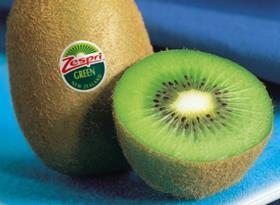
A USDA report has predicted a drop in New Zealand kiwifruit production and exports for a second successive year.
The report points to the Psa disease, fist detected in 2010, as the main cause for the decline, suggesting it could lead to an accumulated 20 per cent reduction in New Zealand’s kiwifruit production by the end of 2013.
Estimates for the 2013 crop range between 312,000 tonnes and 366,000 tonnes, according to the report.
Should these estimates reach their mid-point (338,400 tonnes) it would equate to a 10.1 per cent drop in total supply from 2012.
While New Zealand’s kiwifruit production in 2012 was higher than originally forecast, it was still 10 per cent lower than 2011’s bumper crop, which yielded 420,817 tonnes.
The volume of gold kiwifruit affected by Psa is seen as the greatest variable to the 2013 production figures.
The gold variety is more susceptible to the bacterial canker disease than the green variety.
This poses a major problem, as the sector’s profitability over the last decade has largely been built on gold fruit exports, particularly to Japan, New Zealand’s biggest kiwifruit market by value.
A larger proportion of the fruit shipped to Japan is gold fruit, an anomaly compared with exports to other global markets.
The Japanese market remains a priority for the country’s single desk marketer Zespri, as it accounts for 16 per cent of the company’s kiwifruit export volume and 30 per cent of its total export receipts.
Japanese consumers pay the highest prices among global markets for both green and gold kiwifruit varieties.
Around the world, gold is sold at a 70 per cent premium to green, while In Japan the premium is 40 per cent, underlining the high price of the green in the market.
Globally, New Zealand's kiwifruit exports are expected to fall from a peak of 400,817 tonnes in 2011 to 319,000 tonnes in 2013.



